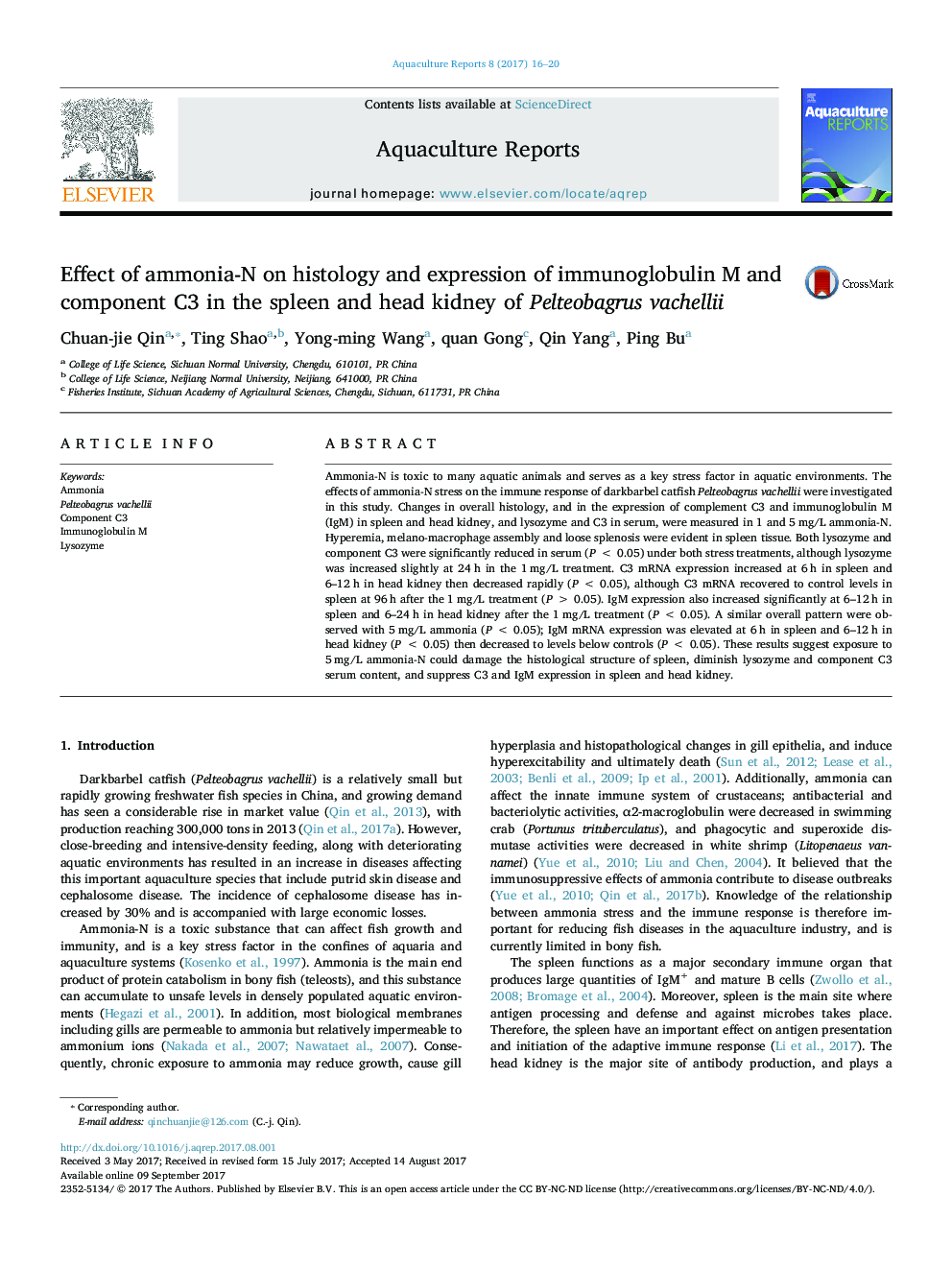| Article ID | Journal | Published Year | Pages | File Type |
|---|---|---|---|---|
| 5752705 | Aquaculture Reports | 2017 | 5 Pages |
â¢Hyperemia and loose splenosis were also observed in the spleen.â¢Serum lysozyme and component C3 activity were decreased with 1 and 5 mg/L ammonia.â¢Ammonia also diminished C3 and IgM expression in the spleen and head kidney.
Ammonia-N is toxic to many aquatic animals and serves as a key stress factor in aquatic environments. The effects of ammonia-N stress on the immune response of darkbarbel catfish Pelteobagrus vachellii were investigated in this study. Changes in overall histology, and in the expression of complement C3 and immunoglobulin M (IgM) in spleen and head kidney, and lysozyme and C3 in serum, were measured in 1 and 5Â mg/L ammonia-N. Hyperemia, melano-macrophage assembly and loose splenosis were evident in spleen tissue. Both lysozyme and component C3 were significantly reduced in serum (PÂ <Â 0.05) under both stress treatments, although lysozyme was increased slightly at 24Â h in the 1Â mg/L treatment. C3 mRNA expression increased at 6Â h in spleen and 6-12Â h in head kidney then decreased rapidly (PÂ <Â 0.05), although C3 mRNA recovered to control levels in spleen at 96Â h after the 1Â mg/L treatment (PÂ >Â 0.05). IgM expression also increased significantly at 6-12Â h in spleen and 6-24Â h in head kidney after the 1Â mg/L treatment (PÂ <Â 0.05). A similar overall pattern were observed with 5Â mg/L ammonia (PÂ <Â 0.05); IgM mRNA expression was elevated at 6Â h in spleen and 6-12Â h in head kidney (PÂ <Â 0.05) then decreased to levels below controls (PÂ <Â 0.05). These results suggest exposure to 5Â mg/L ammonia-N could damage the histological structure of spleen, diminish lysozyme and component C3 serum content, and suppress C3 and IgM expression in spleen and head kidney.
